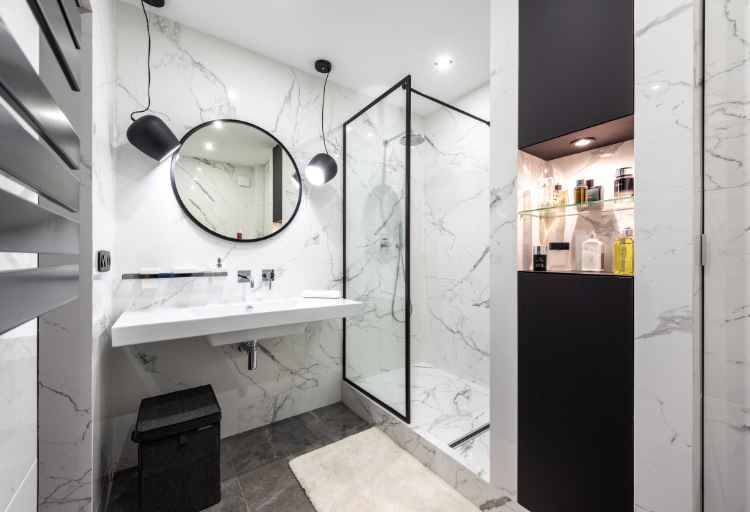How To Remove Bathroom Cabinet
Are you tired of your outdated bathroom cabinet and ready for a fresh new look? Removing your old bathroom cabinet is a simple and rewarding DIY project that can instantly transform the space.
By following these easy steps, you can successfully remove your bathroom cabinet without any hassle.
Before starting, gather all the necessary tools and supplies such as a screwdriver, pliers, adjustable wrench, drop cloth, and safety gloves.
Prepare the area by clearing out any items from inside the cabinet and covering the floor with a protective drop cloth to catch any debris.
Next, disconnect any plumbing or electrical connections attached to the cabinet. Turn off the water supply and unplug any electrical connections before proceeding further.
To remove the cabinet from the wall, locate and unscrew any screws or nails securing it in place. Use caution when lifting to avoid injury or damage.
Once removed, clean and prepare the space for a new cabinet installation by wiping down surfaces and patching any holes left behind.
With these simple steps, you can easily remove your old bathroom cabinet and create a blank canvas for your exciting renovation project.

Contents
Gather Your Tools and Supplies
Now that you’ve gathered all your tools and supplies, it’s time to tackle removing that bathroom cabinet like a pro. Before you begin, make sure you have a screwdriver, a pry bar, and a utility knife handy. These will come in handy when dealing with any stubborn screws or adhesive.
Start by disconnecting the plumbing underneath the sink. Turn off the water supply valves and use the wrench to loosen and remove the pipes. Be prepared for some water spillage, so have a bucket or towels nearby.
Next, locate the screws holding the cabinet in place and use your screwdriver to remove them. If there are any nails or adhesives securing the cabinet, gently pry them loose with the pry bar.
Once you’ve successfully removed the cabinet from the wall, assess its condition. If it’s damaged beyond repair, consider installing a new bathroom vanity instead. This will give your bathroom an instant facelift while also providing ample storage space for your toiletries.
Prepare the Area
First, make sure you’ve cleared the surrounding area for a smooth cabinet removal process. Cover the floor with a drop cloth or old sheets to protect it from any potential damage. This will also prevent any debris or dust from spreading around.
Next, take the time to protect the walls by placing cardboard or thin plywood against them. This will act as a barrier and prevent any accidental scratches or dents while removing the cabinet.
Before starting the actual removal process, it’s crucial to empty the cabinet completely and remove any objects inside. This will make the cabinet lighter and easier to handle during the removal process.
By following these steps, you’ll ensure a clean and hassle-free bathroom cabinet removal experience.
Disconnect Plumbing and Electrical Connections
To make the process easier, you’ll need to disconnect any plumbing and electrical connections before tackling the next steps. Follow these guidelines to ensure a smooth and safe removal of your bathroom cabinet:
- Relocate pipes: Before disconnecting any plumbing connections, turn off the water supply to avoid any leaks or accidents. Use a wrench to loosen and remove the nuts connecting the pipes to the cabinet. Be cautious of any residual water that may be present.
- Safety precautions: Always prioritize safety when working with electrical connections. Turn off the power supply at the breaker box before handling any wires or outlets connected to the cabinet. Double-check that there isn’t any electricity flowing through by using a voltage tester.
- Remove drain lines: Disconnect the drain line from underneath your sink by loosening the compression nut with pliers.
- Secure loose wires: If there are any exposed electrical wires, safely secure them with wire connectors or electrical tape to prevent accidental contact.
By following these steps and taking necessary safety precautions, you can successfully disconnect all plumbing and electrical connections before moving on to removing your bathroom cabinet.
Remove the Cabinet from the Wall
Carefully detach the wall-mounted cabinet by unscrewing the anchor bolts and gently lifting it away from its fixed position. Once the cabinet is removed, you’ll notice holes in the wall where the anchor bolts were attached.
Patching and repairing these holes is important to ensure a smooth and seamless look for your bathroom walls. You can start by filling the holes with spackling compound or drywall filler, using a putty knife to smooth it out. After it dries, sand the patched areas lightly to create an even surface.
To complete the repair, apply a coat of paint that matches your bathroom walls.
As for storage solutions for your bathroom essentials, you can consider installing shelves or racks on empty walls or utilizing other existing cabinets in your bathroom.
Clean and Prepare the Space for a New Cabinet
Next, envision a fresh and inviting space as you cleanse the area and ready it for your stylish new storage solution.
Begin by thoroughly cleaning the walls and floor around where the old cabinet was located. Use a mild cleaner and a soft cloth to remove any dust, dirt, or residue that may have accumulated over time. Pay close attention to corners and crevices to ensure a thorough cleaning.
Once the area is clean, take measurements of the space to determine what size cabinet will fit best. Consider both functionality and style when choosing a new cabinet.
Think about how much storage you need and whether you want open shelves or closed cabinets. Take into account the overall design aesthetic of your bathroom to find a cabinet that complements your existing decor.
By following these cleaning tips and carefully selecting a new cabinet, you can create an organized and visually appealing bathroom space.
Conclusion
So now you know how to remove a bathroom cabinet! Gather your tools and supplies, prepare the area, disconnect plumbing and electrical connections, and carefully remove the cabinet from the wall.
Make sure to clean and prepare the space for a new cabinet if needed. With these steps, you’ll be able to easily update or replace your bathroom cabinet.
